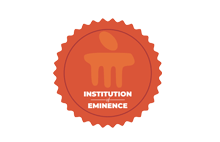Vestibular-Evoked Myogenic Potential in Otosclerosis: A Systematic Review
Document Type
Article
Publication Title
Ear, Nose and Throat Journal
Abstract
Background: Vestibular symptoms are noted in about 40% of the individuals with otosclerosis. Vestibular-evoked myogenic potential (VEMP) is a short latency potential that assesses the functioning of otolithic organs in the vestibular system. Aim/Objectives: This systematic review explored the VEMP findings in individuals with otosclerosis. Material and Methods: Three databases, PubMed, Scopus, and Cochrane were used to perform a systematic literature review regarding VEMP findings among individuals with otosclerosis. Results: A total of 14 studies that encompasses various VEMP parameters in otosclerosis patients were included. The air-conducted vestibular-evoked myogenic potential (AC-VEMP) often had poor response rates in otosclerosis due to conductive hearing loss. Presence of bone-conducted vestibular-evoked myogenic potential (BC-VEMP) before surgery indicated intact otolithic organs in otosclerosis. Postoperatively, presence of VEMP indicated intact vestibular structures postsurgery, while its absence could indicate vestibular trauma, though other factors like stimulus intensity or efficacy of the fitted piston could influence the results. AC-VEMP responses postsurgery suggested resolution of conductive pathology or absence of lasting effects of otosclerosis. Studies show cVEMP is more affected, indicating saccular dysfunction. Conclusion: Otosclerosis affects VEMP responses, with variations observed between AC- and BC-VEMPs. While AC-VEMP responses may be affected by conductive hearing loss, BC-VEMPs offer insights into inner ear function.
DOI
10.1177/01455613241278754
Publication Date
1-1-2024
Recommended Citation
Pinto, Anciya P.; Gunjawate, Dhanshree R.; Malik, Ramiz; and Ravi, Rohit, "Vestibular-Evoked Myogenic Potential in Otosclerosis: A Systematic Review" (2024). Open Access archive. 10713.
https://impressions.manipal.edu/open-access-archive/10713


